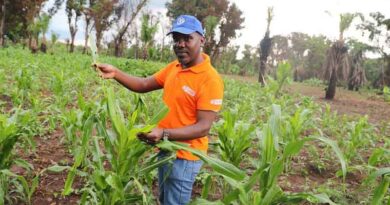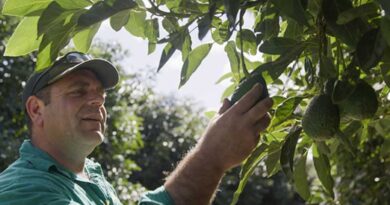CABI study assesses the capacity and responsiveness of Kenya’s national invasive species system
02 November 2021, Africa: A new CABI-led study has sought to set out a framework and method for assessing the performance and responsiveness of an invasive species system. The proposed methodology was piloted in Kenya. The objective was to engage with key actors within an invasive species system using a participatory approach to determine the strengths, weaknesses and functioning of the invasive species system. The approach enabled the identification of opportunities and challenges from various actor’s perspectives as the country continues to fight invasive species such as the Fall armyworm (Spodoptera frugiperda) and Phthorimaea (Tuta) absoluta.
CABI scientists in Kenya and the UK, after conducting a desk review to identify the invasive species system and its component parts, developed a range of indicators and participatory tools to measure system performance in areas including risk analysis, surveillance, quarantine and emergency response.
The resources were used in a stakeholder workshop in Kenya to help facilitate key stakeholders, active within the invasive species system, to conduct a self-assessment of system performance and responsiveness. Follow-up key informant interviews also took place.
The study was carried out in collaboration with colleagues from Umma University and the University of Nairobi in Kenya as well as the Kenya Ministry of Agriculture, Livestock, Fisheries and Cooperatives, the Kenya Plant Health Inspectorate Services (KEPHIS), and the Kenya Forest Research Institute (KEFRI).
Overall the workshop participants recommended that an invasive species management strategy should be developed – adopting a multi-species approach – followed by the establishment of a permanent body that is responsible for regulating the system, for example, the equivalent to the national climate change council.
Furthermore, this coordinating body should be a government agency to ensure policy is backed up by law and that it should be supported by an overarching inter-ministerial committee whose sole mandate is to tackle invasive species.
Frances Williams, lead author of the study published in the journal CABI Agriculture and Bioscience, said, “This study provides a framework for a country-level assessment of responsiveness to invasive species. The insights gained will contribute towards the use of various toolkits designed to help countries effectively manage Invasive Alien Species (IAS) and support key actors in the next steps towards embedding IAS as significant national priorities.
“However, there is an urgent need for global cooperation and coordination, and an international mechanism for invasive species prevention, detection and control.”
The study found that overall in Kenya, a lack of finance, and a clear mandate for leadership in this area, were major barriers to effective system performance, alongside the lack of a central coordinating body to guide invasive species management.
The researchers found that the system in Kenya has some strengths – including a large pool of qualified technical staff to undertake the functions of the system but the participants said, better networking and communication is needed between stakeholders.
The participants added that Kenya is better at detection than prevention. Some functions were identified as operating slightly above average, for example, diagnostic services, whereas others – such as emergency response – were perceived to be operating below average.
Co-author Dr Ivan Rwomushana said, “For countries that already have National Invasive Species Strategies and Action Plans (a NISSAP), the findings can support its implementation, as well as supporting the relevant part of the country’s National Biodiversity Strategies and Action Plans (NBSAP).
“For countries without a NISSAP, the results of the approach we present would provide a good basis for developing a NISSAP. The approach also complements the use and implementation of toolkits that have been developed for the prevention and management of IAS.”
Dr Rwomushana added that the proposed framework for a national assessment would provide key information that may contribute to such international efforts whilst also offering an opportunity for countries to learn from each other to improve areas of weakness.
“This would ultimately help shift the balance towards the prevention of, instead of reaction to, new invasive species incursions in the first instance,” he said.
A recent research paper by Dr René Eschen et al., ‘Towards estimating the economic cost of invasive alien species to African crop and livestock production,’ published in CABI Agriculture and Bioscience, found that IAS cost Africa’s agricultural sector an estimated USD $65.58 billion a year.
In response to this research, H.E Ambassador Madam Josefa Sacko, Commissioner for Agriculture, Rural Development, Blue Economy and Sustainable Environment of the African Union Commission (AUC), highlighted the development of a Strategy for Managing Invasive Species in Africa as AUC’s contribution to having invasive species systems strengthened across member states.
The 2021-2030 strategy provides a framework for all relevant stakeholders at the Continental, Regional and National level can use to sustainably prevent and eradicate invasive species in Africa.














